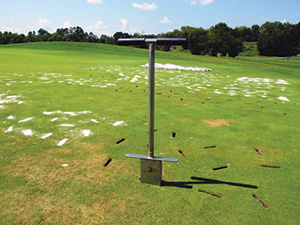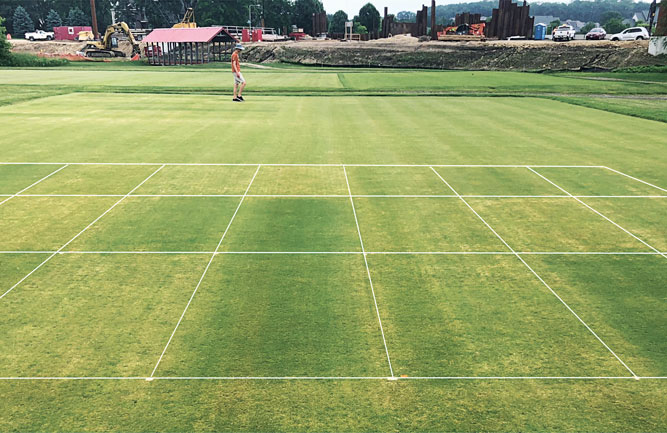Impact of strobilurin applications on season-long turfgrass health
By Brandon Horvath, Ph.D.
Four summer fungicide programs consisting of five applications on a 14-day interval were applied to a creeping bentgrass putting green in the transition zone. Strobilurin fungicides, pyraclostrobin, azoxystrobin, fluoxastrobin and trifloxystrobin were applied at the second and fifth spray interval while all other applications were held constant across treatments. Measurements of visual quality, spectral reflectance, percent cover, turfgrass rooting and disease severity were collected.
No treatments were statistically different in the first year, and significant differences were not observed in the second year until 42 and 56 days after initial treatment, when fungicide programs exhibited greater visual quality, turfgrass cover and spectral reflectance than non-treated control plots.
During the same time period, fungicide-treated plots also showed reduced brown patch severity compared to the very active disease present in non-treated control plots. There were few significant differences among the strobilurin programs, and the differences that were present were related to the various products’ abilities to control disease.
No other season-long differences were observed for any of the other parameters measured other than those influenced by a product’s ability to control disease. This research indicates that the plant health effects that are possible with this class of fungicides are transient and potentially short-lived.
Olympics chooses zeon zoysia for golf at the 2016 Games
[RELATED: Olympics chooses Zeon Zoysia for golf course | 2016 Olympic Golf Course to use same turfgrass as Cordillera Ranch]
When golfers tee off in Rio de Janeiro at the 2016 Summer Olympics, they’ll be doing it on Zeon zoysiagrass, Frank Rossi, Ph.D., confirmed at this year’s Golf Industry Show.
Rossi, an associate professor of horticulture at Cornell University, is a consulting agronomist on the Olympics project. “Everything approaching the greens, 88 percent of the grassed area, will be Zeon zoysia,” he stated in a press release from Bladerunner Farms, which bred the grass.
That means approximately 88 acres of the Olympics course will be Zeon zoysiagrass, including tees, fairways and roughs. By choosing Zeon zoysiagrass, which requires little maintenance and few inputs, those involved say the selection committee showed its desire to have a sustainable golf course at these games — the first to feature golf in more than 100 years.
“It will be an example of sustainability and preservation of an environmentally protected area,” said the president of Rio 2016, Carlos Arthur Nuzman, in the release.
Bladerunner Farms President David Doguet added, “The grass will create a world-class playing surface for the Olympics, and for many years to come.”
Contact Brandon Horvath, Ph.D., assistant professor of turfgrass pathology at the University of Tennessee-Knoxville, at bhorvath@utk.edu for more information.











